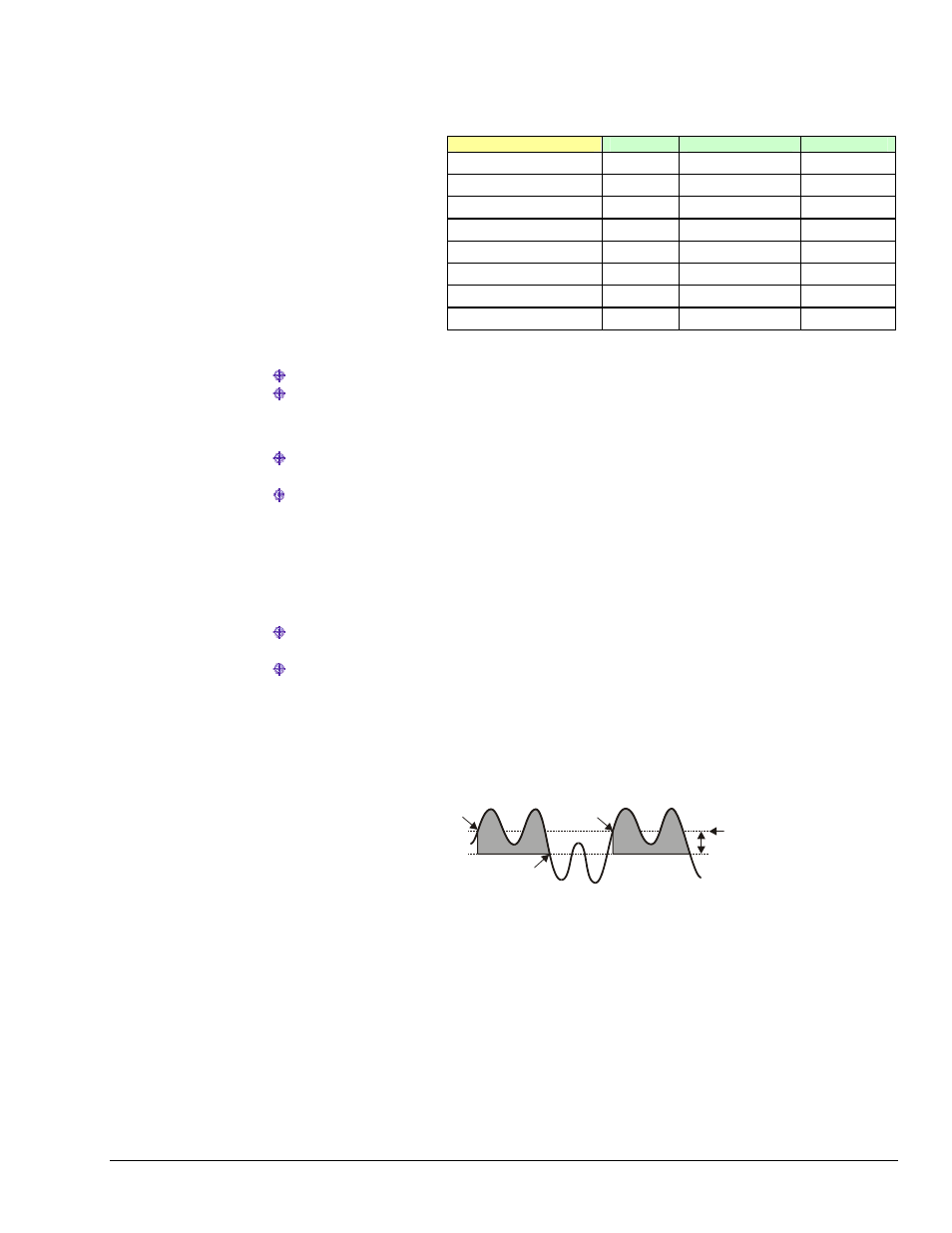Measurement Computing WaveBook rev.5.3 User Manual
Page 87

Trigger validity in a multi-channel environment is determined by the logical relationship among three
elements (slope, duration, and initialization) as discussed in the next section.
Multi-Channel Trigger Types
Trigger Type
Slope
Duration
Initialization
Above-level
Rising Instantaneous Level
Below-level
Falling Instantaneous Level
Above-level-with-latch
Rising Latched Level
Below-level-with-latch
Falling Latched Level
Rising-edge
Rising Instantaneous Edge
Falling-edge
Falling Instantaneous Edge
Rising-edge-with-latch
Rising Latched Edge
The first step in multi-channel
triggering is to examine the input
signals. To determine trigger
validity, WaveBook can examine
each input signal in 1 of 8 ways.
Note: Each trigger type is a
combination of three
elements: slope, duration,
and initialization.
Falling-edge-with-latch
Falling Latched Edge
Slope (above/rising or below/falling) sets whether the trigger is valid when the signal is:
Above the trigger level (rising)
Below the trigger level (falling).
Duration (instantaneous or latched) specifies the action to take if the signal level becomes invalid after it
has been valid:
Instantaneous triggers become invalid as soon as the signal does; they are used to trigger on
the coincidence of signals, when two or more signals are simultaneously valid.
Latched triggers remain valid until the acquisition is complete; they are used to trigger on the
occurrence of signals, when two or more signals have already become valid.
The trigger duration only makes a difference in multi-channel "AND" triggering. In multi-channel "OR"
triggering, WaveBook will be triggered as soon as any channel becomes valid; what happens when a
channel becomes invalid does not matter. In contrast, "AND" triggering waits for all of the triggers to be
valid; and so, latching can be important for rapidly changing signals.
Initialization (level or edge) specifies the sequence necessary for a signal to be a valid trigger:
Level triggers become valid as soon as they reach or exceed the trigger level, even if they are
already past the trigger level when the acquisition is started.
Edge triggers first wait until the signal level is invalid. Then they wait for the signal to reach
the trigger level before becoming valid. Thus, level triggers look for a signal level, whenever
it occurs; and edge triggers look for a rising or falling transition that reaches the trigger level.
Examination of the input signals compares two specified signal levels: (a) The trigger level determines
when the input channel is a valid trigger, and (b) the hysteresis is the amount by which the channel must
differ from the trigger level for the channel to become invalid.
Above-Level Trigger
Rising slope
Instantaneous duration
Level initialization
Trigger Level
Hysteresis
Trigger
Trigger
No
Trigger
This trigger is valid whenever the signal level is above the trigger level and stays valid until the signal level
goes below the hysteresis range. In the figure, the channel trigger is valid during the 2 shaded intervals.
Whether this condition triggers WaveBook or not, depends on the type of multi-channel triggering ("AND"
or "OR") and on the state of other trigger channels. With "OR" multi-channel triggering, WaveBook will
trigger when the signal first rises above the trigger level—if ready for a new trigger, WaveBook will also
trigger the second time the signal rises above the trigger level. With "AND" multi-level triggering,
WaveBook will not trigger until every specified trigger channel is valid. If all other trigger channels are
valid, WaveBook will trigger when the signal reaches the shaded region; but if some channels are not
valid, this channel will have no effect.
WaveBook/512A, /516, /516A , /516E
897895
WaveBook Operation Reference 4-17
